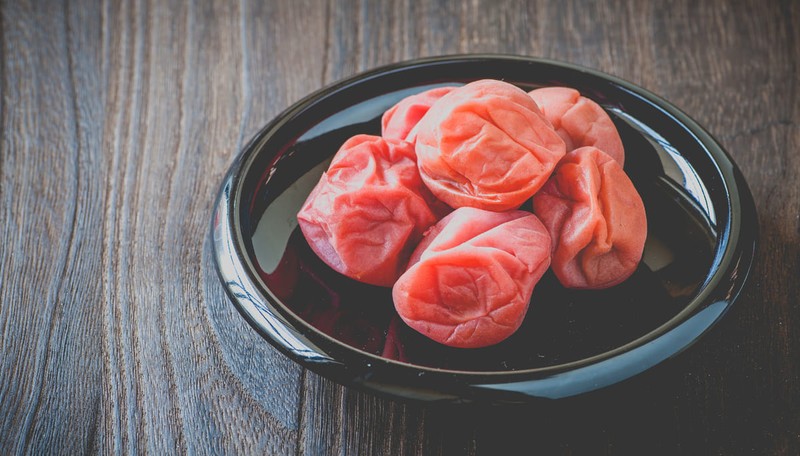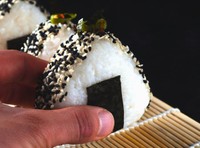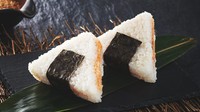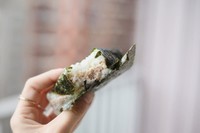What is umeboshi?
Umeboshi is a dried plum from the ume tree, a Japanese plum tree. Learn more about its use, history and characteristics.

Table of contents
What is umeboshi?
Umeboshi is a Japanese dried plum. The fruit has a stone and is green in color, with traces of yellow and red. Literally, umeboshi means dried plum - "ume" meaning plum and "boshi" dried.
Umeboshi is not a plum as we know it. It is distinguished by its crumpled appearance and its acidic taste, more pronounced than that of a lemon once it is macerated.
The texture of ume is similar to dates and umeboshi is found in many Japanese products such as umeboshi vinegar, umeboshi paste, umeboshi liqueur, etc. It is often eaten on top of food. It is often eaten with rice to spice up the bland taste of the latter or in maki and onigris.
What is the history of umeboshi?
Umeboshi was introduced to Japan from China in the 5th century. When the fruit is ripe (harvested from May to July), it is harvested, washed and fermented in salt (about 80 g of salt for 1 kg of fruit) for 1 to 6 months.
Purple sisho leaves are added in the fermentation to give the Japanese plum its typical red color. The umeboshis are then filtered. The liquid that comes out of the lacto-fermentation (umeboshi vinegar) is kept.
As for the fruits, they are dried in the sun, desalted and seasoned according to a thousand-year-old tradition. This is what gives the umeboshi plum its special flavor. The dried plum can be kept for a very long time.
What are the benefits of umeboshi?
Japanese medicine recognizes many therapeutic virtues to the umeboshi plum.
It helps to digest, to absorb calcium, and to fight against fatigue.
Does umeboshi facilitate digestion?
Thanks to its alkalizing power, Japanese plum improves the absorption by the intestine of alkaline minerals such as iron and magnesium contained in other foods. This helps to avoid bloating, which is the cause of digestive problems.
Does umeboshi absorb calcium?
Thanks to its high citric acid content (a Japanese plum contains on average 2 to 3 times more citric acid than a lemon), umeboshi helps to absorb and fix calcium. Citric acid also helps protect against the pylori bacteria that cause stomach ulcers and cancer.
Therefore, umeboshi acts as an intestinal and gastric dressing and as a bonus, it also calms headaches.
Does umeboshi help to fight against fatigue?
Umeboshi plum helps to break down and release lactic acid responsible for fatigue by activating energy metabolism. Japanese warriors, including the samurai, believed that umeboshi was a way to regain energy.
This belief still exists and allows to activate placebo effects.
Where to buy umeboshi?
You can find whole plums and paste in some Asian markets and delicatessens. The Japanese grocery store where I bought mine had different variations in the cold section of their store, and you can also find these products online.
You can buy whole umeboshi on Amazon, but they are probably not the kind that need to be refrigerated. Still, it's a good option if you can't find any in your area.
How to use umeboshi in our meals?
Umeboshi is an easy replacement for tomato in many recipes such as salads and pizzas.
A little umeboshi in sauces gives you new flavors. In Japan, umeboshi is a popular accompaniment to rice dishes. It is also used in maki, sushi and onigris to give them a tangy taste.
At breakfast, it is eaten with tea for energy throughout the day.
Umeboshi vinegar
This delicious vinegar is made from the juice of the umeboshi tree. It is a versatile condiment that adds a refreshing taste to salad dressings, mayonnaises, sauces and marinades, but you can also use it on its own as a substitute for traditional vinegar.
Because of its natural salty taste, umeboshi vinegar can be used to reduce salt in any recipe. Try it in a spread or mix it with toasted sesame oil for an unforgettable dressing. umeboshi vinegar also enhances the taste of cooked vegetables, such as cabbage, fish, meat, noodles, etc. However, umeboshi has a very strong taste, so use it sparingly.
Umeboshi paste
The salty plum paste is used as a seasoning and can be used to prepare your sauces or to accompany sushi, spreads, grilled fish, and other preparations. Again, the salty taste means you can reduce the amount of salt you use! In addition, umeboshi paste can also be used as a cure. In this case, mix it with kouzou or add it to kukicha (traditional Japanese green tea blend) or any herbal tea of your choice.





